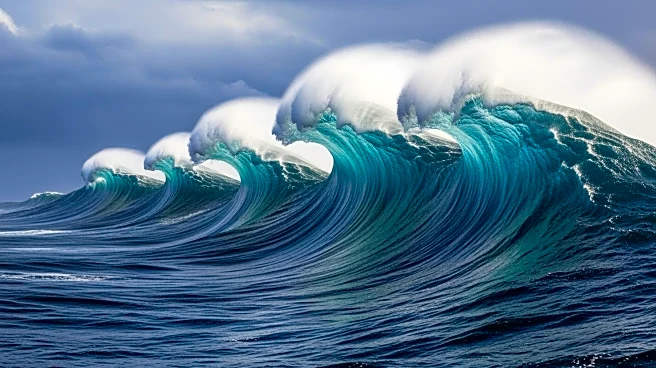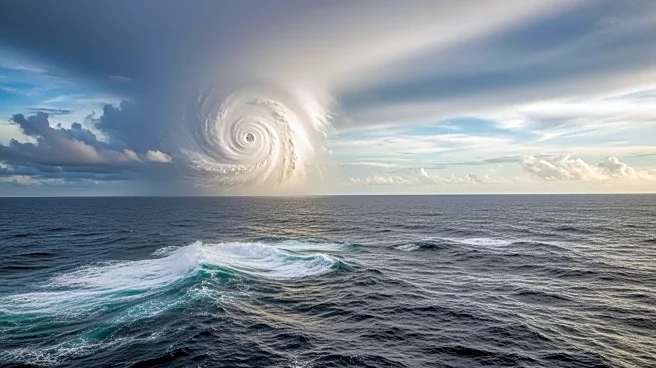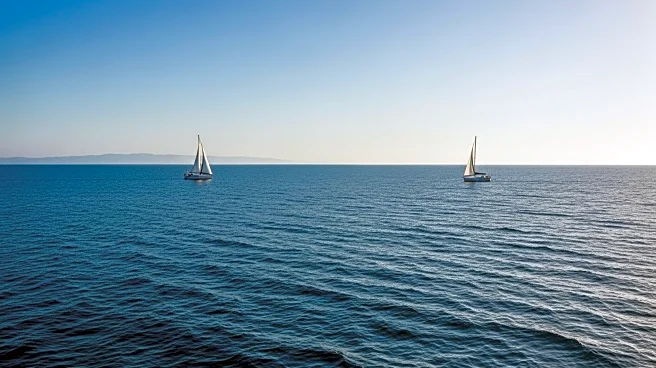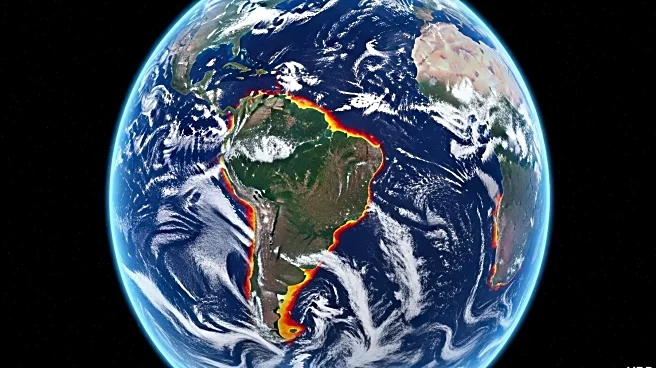What's Happening?
Satellites have recorded the largest ocean swells ever seen from space, highlighting how massive waves can act as storm 'messengers,' carrying a storm's power across entire oceans. Observations from the Surface
Water and Ocean Topography (SWOT) mission allowed scientists to track waves born from powerful storms. These waves, driven by wind, generate swells that carry destructive energy to faraway shores—even if the storm itself never makes landfall. One storm in particular, Storm Eddie, which formed over the North Pacific in December 2024, served as a natural laboratory for the study. During the peak of the storm, satellites observed open-ocean waves reaching nearly 65 feet, the highest ever measured from space. Over the following two weeks, those swells traveled more than 15,000 miles, crossing the Drake Passage and entering the tropical Atlantic. Although the storm never made landfall, its waves reached distant coasts with surprising force, powerful enough in some cases to cause erosion and flooding.
Why It's Important?
The study reveals that shorter, high-energy storm waves—not just long, slow swells—carry much of the ocean's transported energy, challenging long-held assumptions about how wave power is distributed. This insight will help scientists refine global wave models and better protect coastal communities from related hazards. Understanding the dynamics of these waves is crucial for coastal management and disaster preparedness, especially in regions prone to erosion and flooding. The ability to predict and track these waves can lead to improved safety measures and infrastructure planning, potentially saving lives and reducing economic losses.
What's Next?
Researchers are expected to continue refining global wave models using the data collected from the SWOT mission. This could lead to more accurate predictions of wave behavior and their impact on coastal regions. Coastal communities may need to reassess their preparedness and infrastructure resilience in light of these findings. Further studies could explore the implications of these waves on marine ecosystems and the potential for harnessing wave energy.
Beyond the Headlines
The findings could have implications for the shipping industry, as understanding wave patterns can improve navigation safety and efficiency. Additionally, the study may influence policies related to coastal development and environmental conservation, as governments seek to mitigate the impact of these powerful waves.












